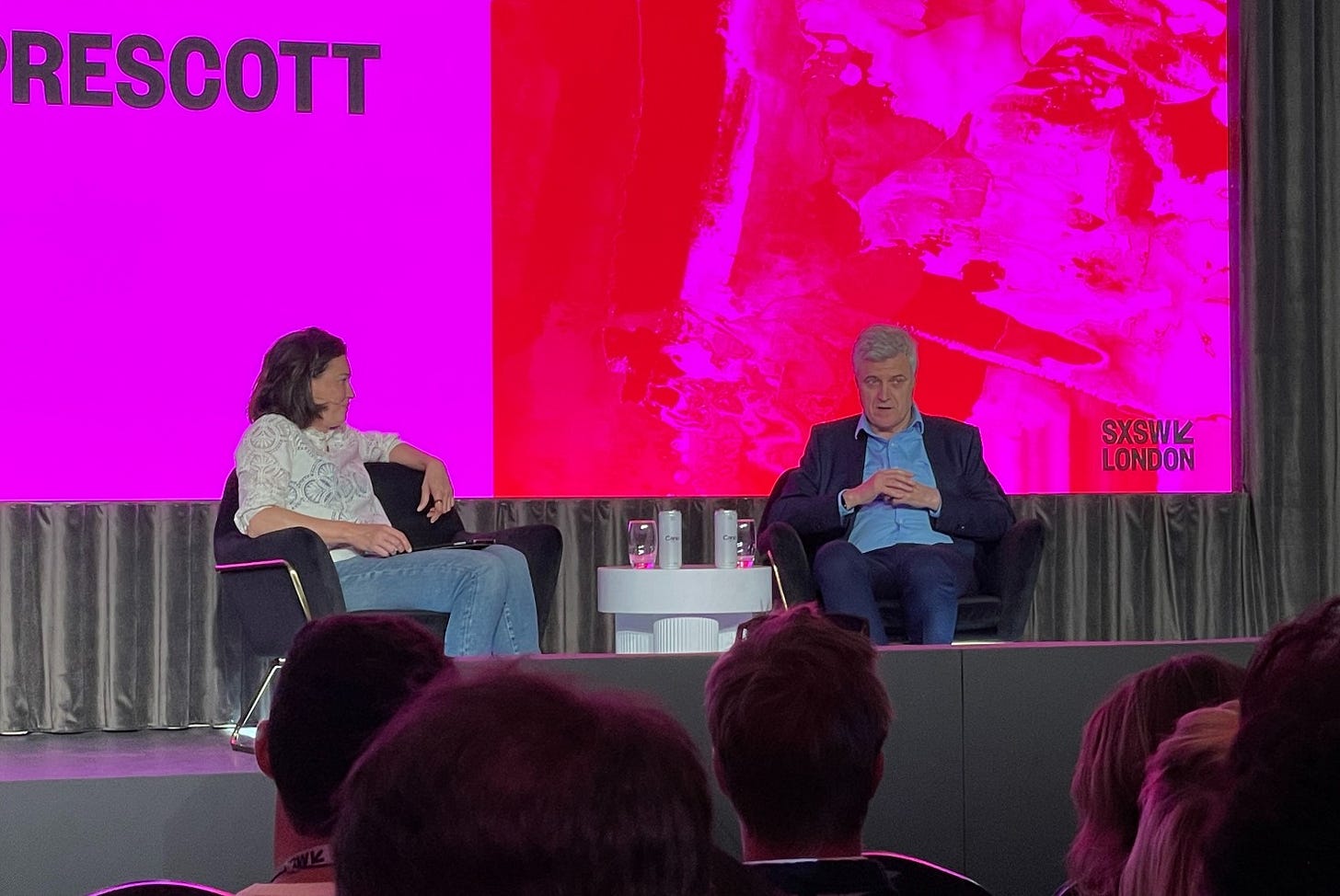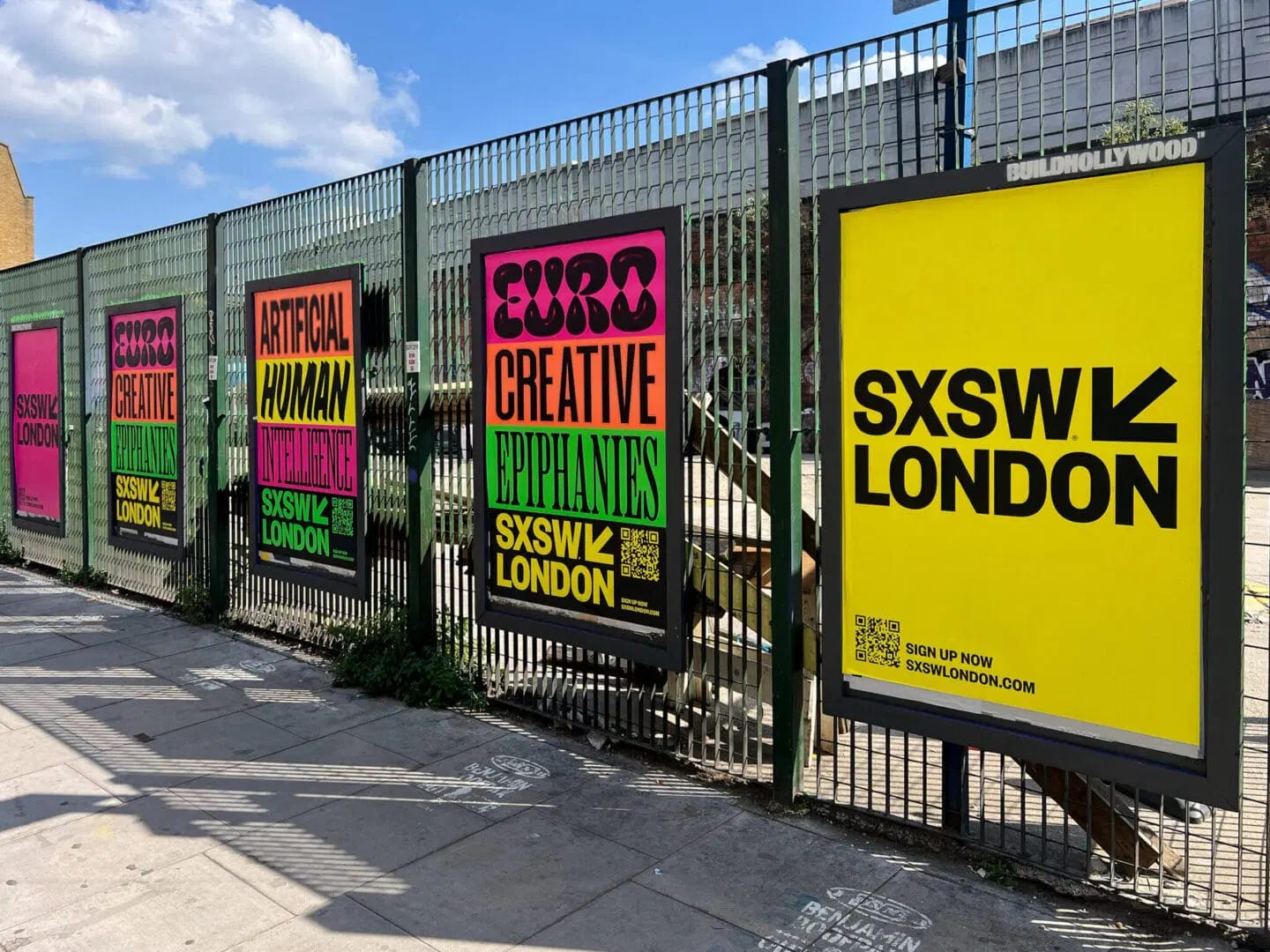Promise, unfulfilled: The problems of SXSW London
A fortnight on from the inaugural London edition of “the world’s leading festival celebrating creativity, culture and technology” we’re still troubled by a bland week of ‘agreeathons’
Welcome to TOMORROW WILL ARRIVE, a platform for cultural critique and future thinking; offering perspectives on luxury, brand strategy, identity and design. Created by BIRCH, we are a London-based creative studio, founded in 2009. You can reach us here, or join our Subscriber chat here.
SXSW has always sold itself on one promise: if you show up, you’ll leave changed.
It’s supposed to be a creative jolt to the system – bold, unexpected, inspired. A place where wild ideas collide, and you remember why you got into the business of creativity in the first place.
So, why did the inaugural SXSW London feel so… dull?
We attended with high hopes. London deserves a big, bold, creative tentpole. But what we got was something altogether different. Something beige, predictable and unhealthily self-congratulatory. The feeling, more than anything, was of an industry that’s gotten a little too comfortable admiring itself in the mirror.
Here are six takeaways from SXSW London’s debut – and what we think they say about creativity in 2025.
1. We’ve mistaken performance for substance
Panel after panel felt bland: CEOs riffing on values, CMOs offering TED-lite life advice, creative leads politely applauding each other’s case studies.
The work – the real, hard, fragile process of making good things – was mostly absent.
Somewhere along the line, we’ve decided that being seen talking about creativity is just as good as doing it. It isn’t.
2. AI might be the topic, but ego is the theme
Yes, AI was everywhere. But many of the conversations weren’t about what it can enable. They were about what it threatens: legacy thinking, legacy roles, legacy power.
Rather than asking how AI can unlock new forms of expression or break creative deadlocks, too many sessions circled around how it might replace us – as if the creative industry’s primary concern is protecting its status, not evolving its value.

3. We’re obsessed with being interesting – not interested
When SXSW launched in Austin, it was scrappy. People didn’t come to show off – they came to learn, share, riff, debate. It was an open-source experience and it was generous.
London didn’t feel that way.
There was a lot of “look what we did” without the “here’s what we learned” or the “here’s what we’re grappling with” to get your thoughts racing.
And, sadly, when curiosity dies, creativity follows.
On day three we attended two panel discussions. In one, executives from Diageo and Unilever offered up platitudes about “culture marketing” and influencers (“Ginfluencers” for the Guinness brand).
The conversation couldn’t have felt less new. The room was a sea of bowed heads lost in their phones.
By contrast, a panel about the ever-blurring lines between entertainment and advertising media with Uncommon Creative Studio’s Charlie Gatsky Sinclair and Loewe CMO Charlie Smith was fascinating, but at 25 minutes long, far too short.
As the speakers started to dig in, the moderator was forced to call time. And that, frustratingly, was that.
4. If we want better ideas, the festival needs better formats
Part of the problem is structural. Fireside chats and panels with ‘safe’ speakers and a moderator who doesn’t want to offend anyone is not a recipe for illumination.
Festivals like SXSW deliver for audiences when they provoke, surprise and generate debate. We don’t want predictable pairings and staid formats. We want TEDTalks on steroids.
The D&AD Festival back in May had a much higher standard of keynote speakers – who were focused on posing provocative questions and sharing knowledge. Leland Maschmeyer’s session, ‘Perform or Perish’ (pictured below), is a great example of a talk that ticks the right boxes – rather than misses the mark.
5. Creativity needs conflict, not comfort
There’s a reason that we collectively acknowledge that great work requires ‘creative tension’. Growth happens in discomfort.
But SXSW London played it polite. Most panels were ‘agreeathons’. Few challenged each other.
Fewer still questioned the systems we work in; the procurement traps, the corporate safeness of marketing in the age of data, the ‘blandification’ of creative instinct.
Where are the agitators for creativity? Where’s the hunger?
So, where do we go from here?
Let’s take a step back for a moment.
At a distance, SXSW London pulled off something impressive; wrangling a global festival into the chaos of Shoreditch for the first time is no mean feat.
The infrastructure worked. The atmosphere was optimistic. And, once the queues of the first day were resolved, the week – as far as we could tell – ran smoothly. The intention was good.
But, intention alone is not enough.
For the festival to be more than a branded echo chamber, it has to shape conversations with teeth, make space for uncomfortable truths and enable creatives to exchange discoveries, challenges and collective wisdom.
If the SXSW programmers can take this on board and change how they brief speakers – to be less “humblebrag” more “let’s share knowledge”, then there’s hope.
If this doesn’t happen, then we’re just building another fancy mirror to admire ourselves in.







